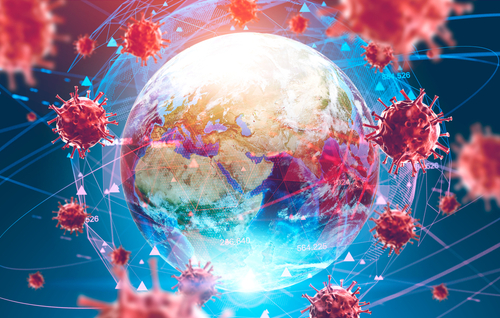Racing to vaccinate the world
To bring the COVID-19 crisis to a close, we must ensure equitable access to vaccinations – a task that COVAX is striving for
More than six months after the first COVID-19 vaccine was approved there are now more than a dozen available, and yet the pandemic is still raging. It should now be clear to everyone that vaccines alone will not stop this pandemic. We also need vaccinations – because as long as the virus is able to circulate and has the opportunity to mutate, this crisis will continue and the global economic recovery will be delayed. That means until all high-risk people in all corners of the world are protected, there can be no winners. So, although the race to develop a vaccine is over, a new one has begun: the race to vaccinate the world.
As with any race, timing is critical. Thanks to generous support from G7 leaders we now have a way to ensure that people in all countries are able to get access to these vaccines, through COVAX and its Advance Market Commitment. We are confident that COVAX will deliver on its promise of supplying more than two billion doses of vaccine to participating economies by the end of the year – but we need to get there quicker. The longer reinfection continues, the longer efforts to resume trade, commerce and travel will continue to stall, and the greater the risk that new variants will emerge. This will directly affect the G7 vision to build back better from coronavirus and create a greener, more prosperous future.
But that is not the only reason why speed is as important as equitable access. A fully funded COVAX AMC will allow us to protect up to 30% of people in 91 lower-income countries, people who would normally have limited or no access to these vaccines. But given that we still do not know how long immunity lasts with these vaccines, any delay in protecting those people who face the highest risk, such as front-line health and social care workers and vulnerable people, risks us needing to protect those same people again with booster shots before others have even received their first shot.
BREAKING DOWN BARRIERS
At a time when many countries still face supply limitations, it is in everyone’s interest to avoid that situation. However, although there are bottlenecks, the total global supply of vaccines is actually quite healthy. If they are prioritised for high-risk individuals, there should be enough doses to go around. One way to achieve this is by governments donating surplus doses for equitable distribution through COVAX.
G7 leaders have already played a key role in driving this, both in terms of donating their own surplus and in encouraging other governments to do the same. Similarly, access to vaccines can be accelerated if the governments of self-financing participants of COVAX transfer their allocated doses to lower-income countries through the AMC.
At the same time, we need to address manufacturing bottlenecks. In the short term, that means engaging with all players, to maximise manufacturing output and discourage export bans, which threaten not only access to these vaccines, but also the flow of vital components, materials and ingredients used to make them, as well as other critical health products. But for the longer term, these supply issues have identified serious weak spots in our ability as a global community to respond to pandemics.
Technology transfers have played an essential role in ensuring that the world gets COVID-19 vaccines rapidly and in large volumes. But there needs to be more of this, through greater collaboration between those that know how to make vaccines and those that need them the most, and we need to look seriously at how we can increase global vaccine manufacturing capacity, particularly in emerging economies. This would help us bring the current crisis to an end, and it would also strengthen global preparedness for future pandemics.
Given the ambitions and vision of the UK’s Pandemic Preparedness Partnership, launched as part of its G7 presidency, that is something that needs to be factored into all our thinking now. Without a doubt there will be a next time – it is an evolutionary certainty. We can therefore not afford not to solve these issues now and equally must build on our current successes, like COVAX and the Access to COVID-19 Tools Accelerator.
When the pandemic was first declared, we did not know whether to view it as a dress rehearsal or a global tragedy. We now know it is a little of both. We must use this opportunity to build the systems to mitigate future crises. We all have our part to play. Because no one is safe until everyone is safe.












